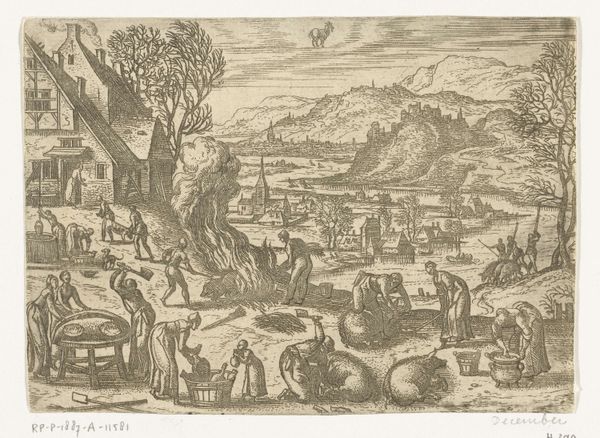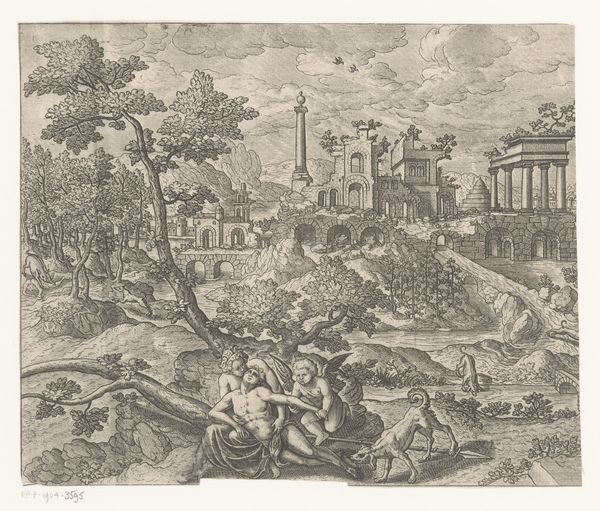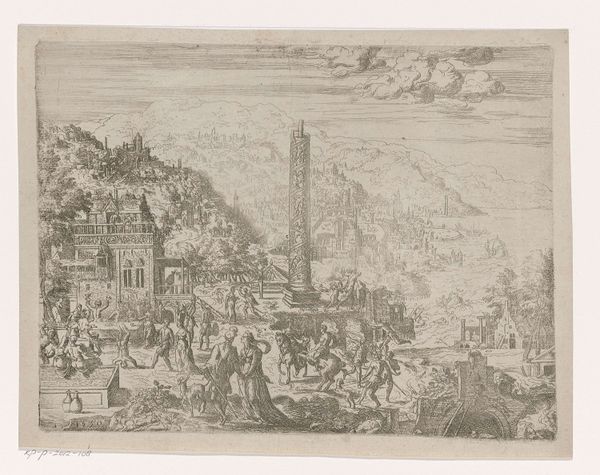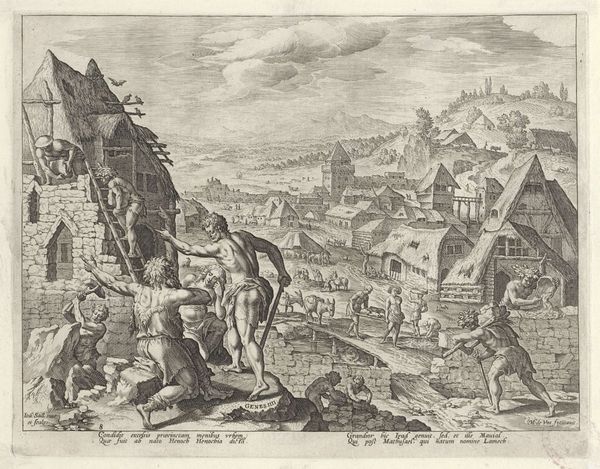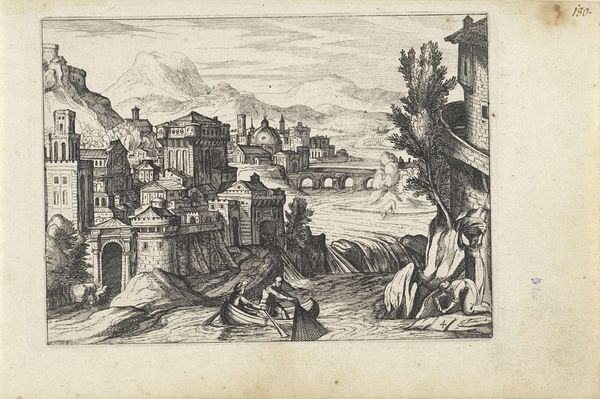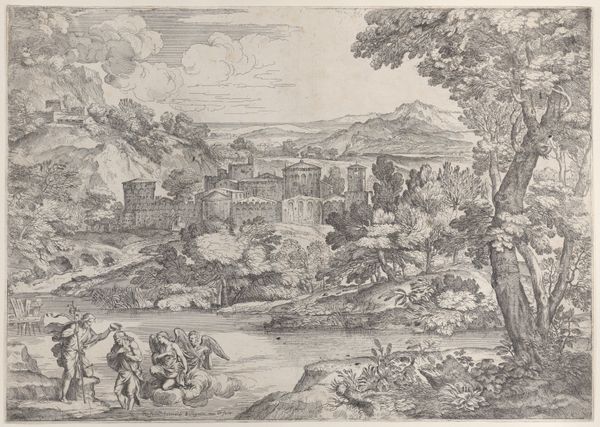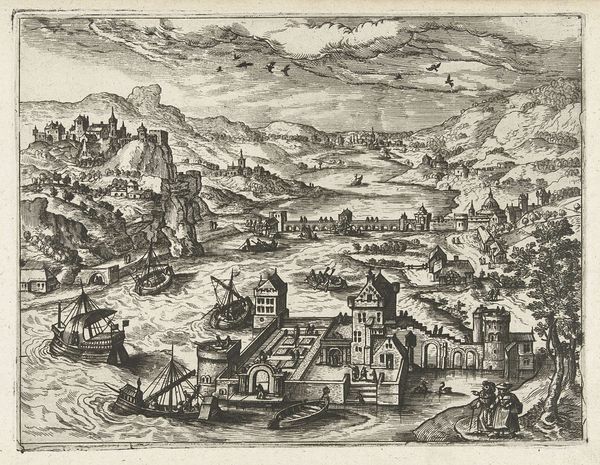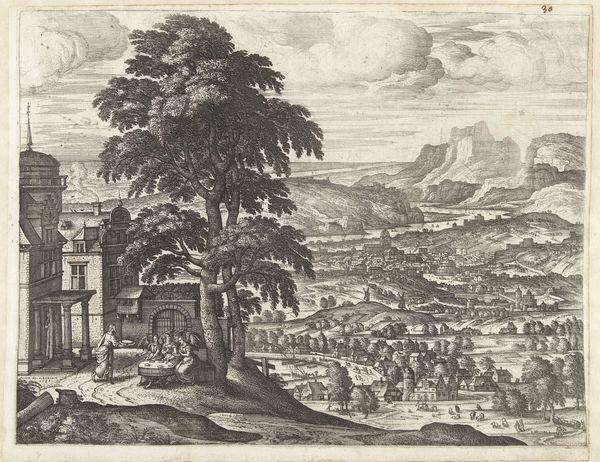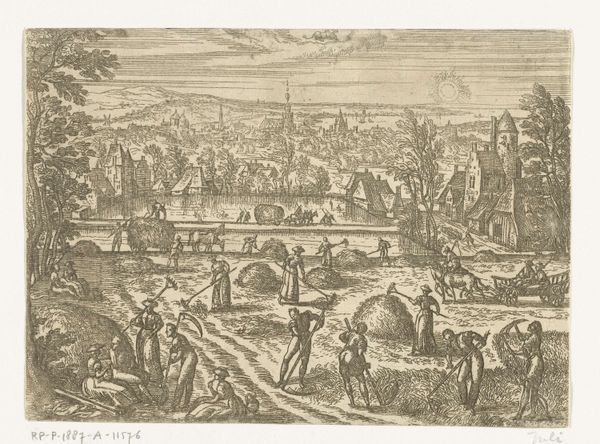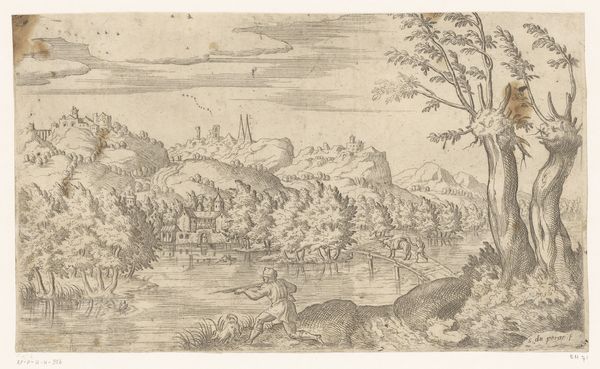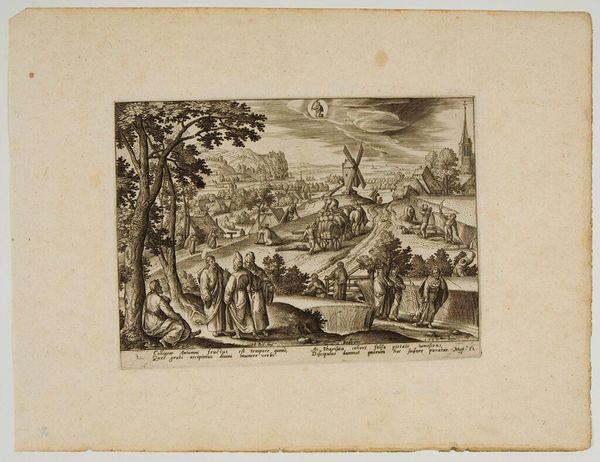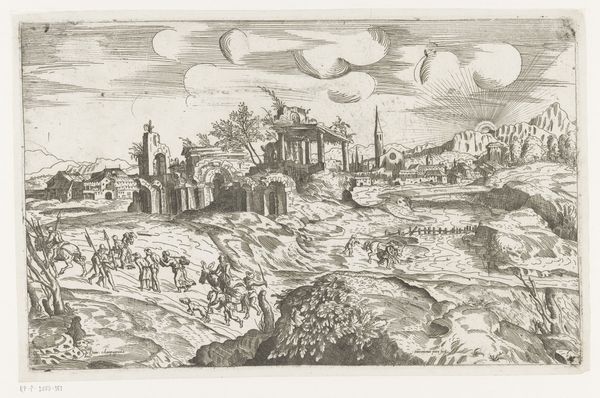
Zuidelijk landschap met feestend gezelschap en antieke zuil 1550
0:00
0:00
print, etching
#
allegory
# print
#
etching
#
landscape
#
classical-realism
#
figuration
#
form
#
column
#
line
#
cityscape
#
genre-painting
#
history-painting
#
northern-renaissance
Dimensions: height 197 mm, width 260 mm
Copyright: Rijks Museum: Open Domain
Editor: So, here we have Pieter van der Borcht the First's "Southern Landscape with a Feasting Company and Antique Column," an etching from 1550 currently held at the Rijksmuseum. I'm immediately struck by the contrast. There's such vibrancy in the foreground with people feasting, but there’s also this imposing sense of decay and ruin woven throughout. What's your read on this piece? Curator: It's interesting that you pick up on the contrast because, to me, it speaks directly to the complex social and political anxieties of the time. Consider the antique column: a remnant of a past empire, standing tall, yet surrounded by signs of fragmentation. It's not just a landscape; it’s a commentary on power, on how past empires impact current social dynamics. Do you see how the feasting company, seemingly carefree, is juxtaposed against scenes of potential conflict? Editor: Now that you mention it, I do see it. There are figures fighting, and others seem to be fleeing in the middle ground. Is this a commentary on the instability of prosperity? Curator: Precisely. The print’s composition stages a deliberate conversation between leisure and potential violence, perhaps alluding to the fragility of peace and prosperity in a time of religious and political upheaval. Consider also the location—a “Southern Landscape.” Who has access to this idealized “South”? Who is excluded? How does it mirror colonial ambitions of the time? Editor: That brings a whole new dimension to it. It’s easy to get lost in the idyllic elements and miss these undercurrents of power and exclusion. Curator: And the "antique" element reminds us of how societies invoke an ideal past to legitimise the present or future actions. Ultimately, this artwork invites us to question whose stories are being told and at what cost. Editor: I appreciate that. I'll definitely look at prints differently now, thinking about their layered political contexts. Curator: Exactly, understanding those contexts empowers us to see these works as more than just pretty pictures but as complex social texts.
Comments
No comments
Be the first to comment and join the conversation on the ultimate creative platform.
